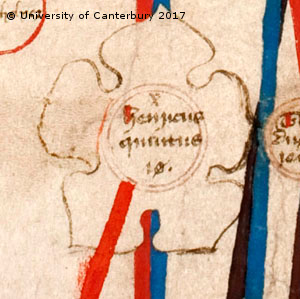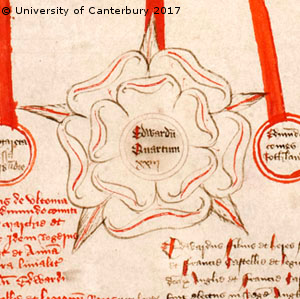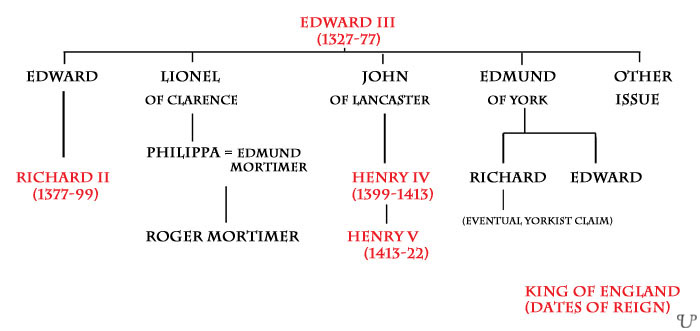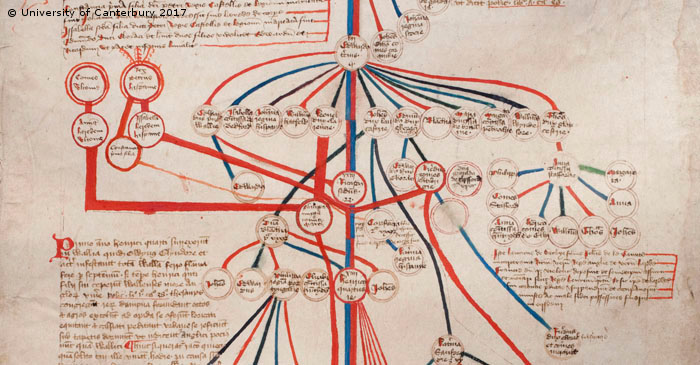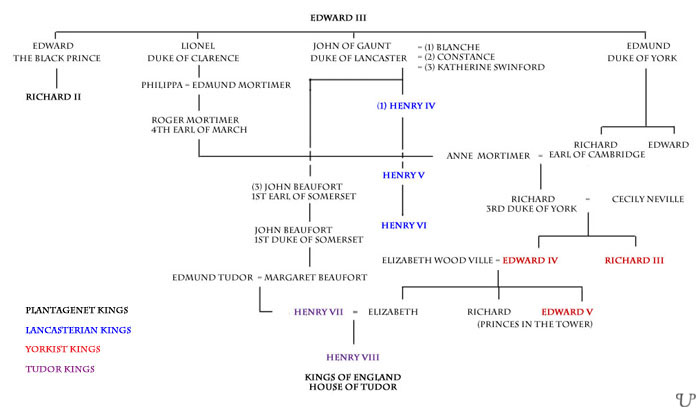House of Lancaster
Although the ultimate origins of the Canterbury Roll are a mystery, it was certainly created as a pro-Lancastrian text. The work of the earliest scribal hand to appear on the Roll, that of the Lancastrian Scribe, dates to between 1429 and 1433. When first drawn up, our roll highlighted historical continuity and justified Lancastrian rights to the crown, as did many similar contemporary rolls.
As with any dynasty, insistence on legitimacy was paramount for the Lancastrians. In 1399, Henry of Lancaster had deposed his cousin, Richard II, and bypassed the heir presumptive (Edmund) to establish himself as Henry IV. In the first half of the 15th century, the Lancastrian position seemed secure. For example, the successions of first Henry V and later the infant Henry VI were uncontested. Nonetheless, Lancastrian kings were vulnerable to other families with similarly strong claims to the throne. In particular, the danger for the Lancastrians came from the other major branch of the royal family, York.
This genealogy shows the claim to the throne of the Lancastrian kings and the foundations of the later rival Yorkist claim.

